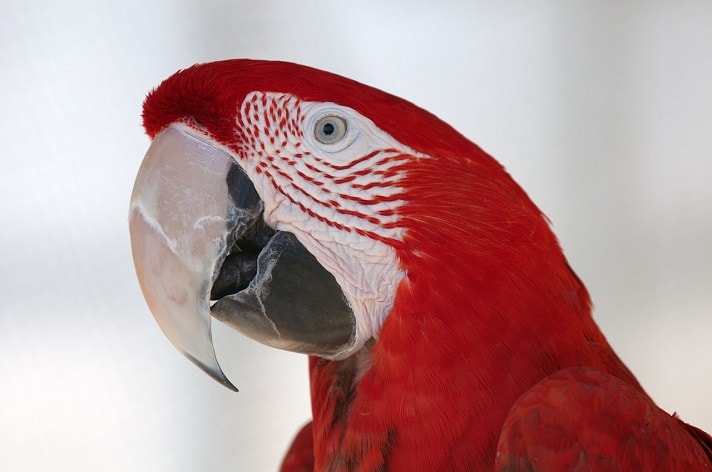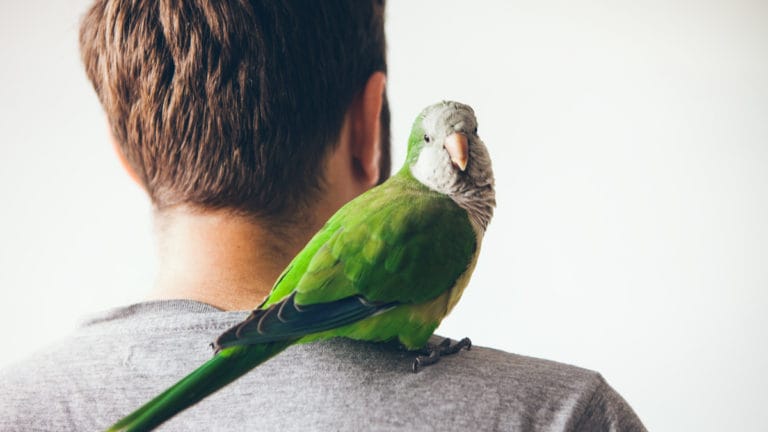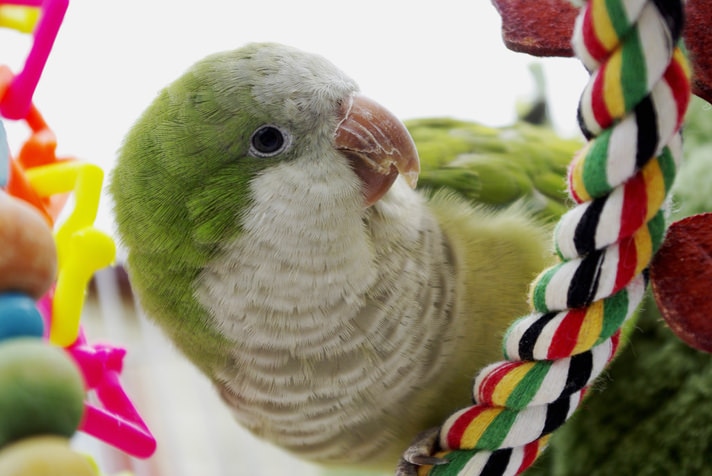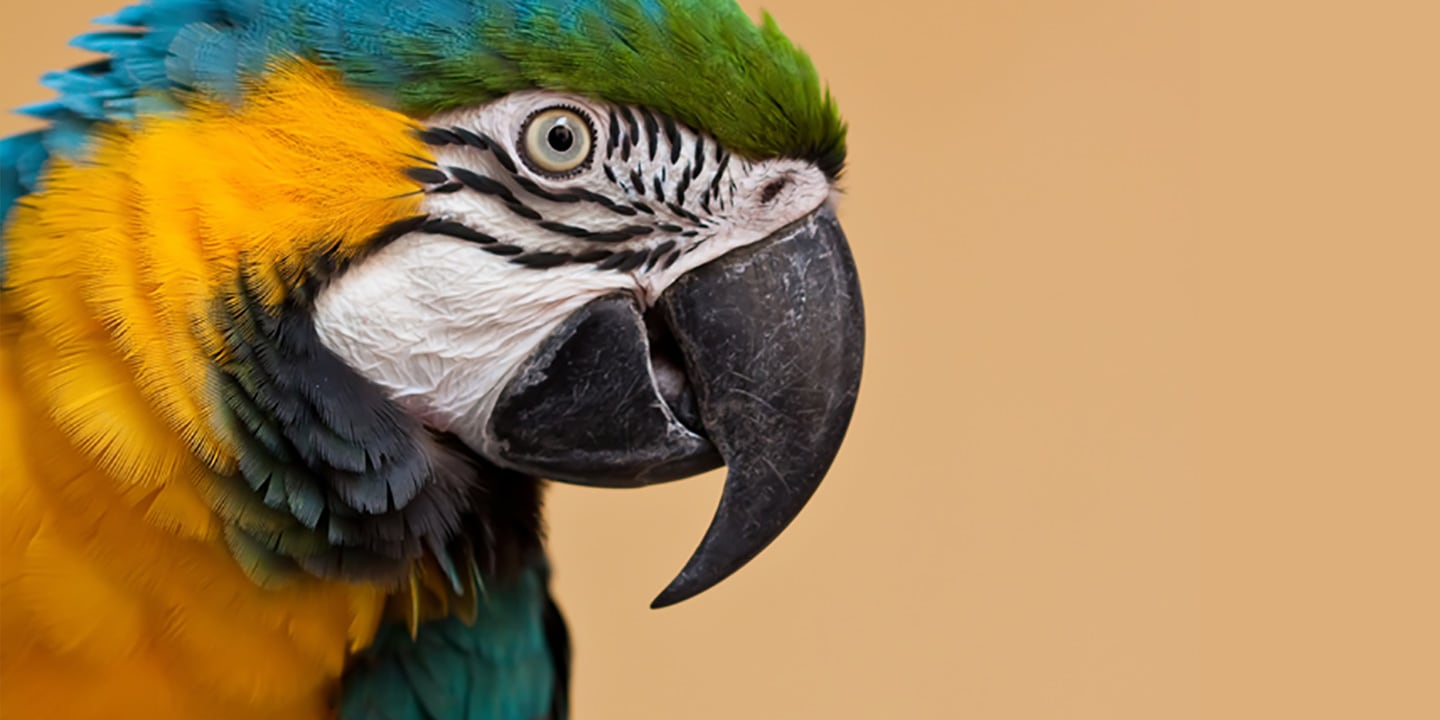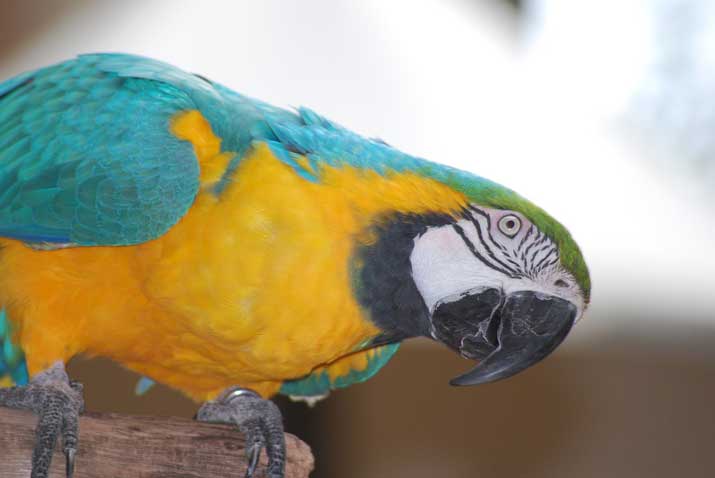Beaks grow and flake, with some species more prone to flaking than others. The upper beak, called the rhinotheca, of some species tend to overgrow in length, and, with other species, the beak tends to become “thickened” with excess growth. With still other species, the lower beak, called the gnathotheca, tends to grow too long. While liver disease can cause the beak and nails to overgrow, sometimes overgrowth is simply that, the beak not wearing down normally due to inadequate chewing activities.
When I perform a physical examination on a bird, I evaluate the beak for symmetry and for abnormalities, including excessive growth. In some cases, especially when dealing with an overgrown gnathotheca, a portion of the lower beak breaks off on one side, resulting in the rhinotheca curving to one side. This can cause a permanent deformity if not corrected in time. Although a normal, healthy beak should wear down properly through normal chewing activities; this is not always the case.
Because the beak does not always wear down the way it should, there are times when it is advisable to trim and shape it to normal dimensions. However, consider these important points before having a beak trim performed on a bird.
Point 1: The avian veterinarian must have a good idea of what that species’ beak normally looks like in order to perform a trim that closely approximates what is normal.
An avian vet should know the “normals” for the species that he or she is working on — whether or not the beak is of normal size, shape and length — or he or she would consult a text to find this out prior to attempting a beak trim. A beak trim is a serious procedure.
Point 2: Find out how much is being taken off and with what tool.
During a trim, if only excess beak tissue is removed, usually by a high-speed grinding tool, this is similar to filing fingernails. It doesn’t hurt because you are only filing away dead keratin (beak and nails). It is also not dangerous to the bird, because only this excess tissue is removed.
However, using a high-speed grinder, such as a dremmel tool, can cause pain, because heat is generated by the friction. Unless the veterinarian is very careful and pays close attention to the amount of heat generated, this friction/heat could cause the parrot pain and potentially permanently damage the beak tissue.
Grinding the beak down to the living tissue causes bleeding, and it is possible to introduce infectious organisms. This can also be quite painful to the bird, as there are many nerve endings in the beak’s tip.
Point 3: If this procedure must be performed, general anesthesia may be required, and the procedure should be performed aseptically.
After cleaning the beak with a disinfectant (making sure the bird does not swallow any), the vet should use a new grinding head to minimize the risk of introducing microscopic organisms during the procedure. I keep grinding heads for each client in plastic bags with their names on them, and I use a different one for each client because it is impossible to completely disinfect a rough grinding head, ensuring that the heads do not serve as a method of inadvertently transmitting disease from bird to bird.
Anesthesia may or may not be necessary for corrective grinding. This must be decided on a case-by-case basis and depends on any expected pain during the procedure and whether or not the veterinary team can safely and humanely restrain the bird for the procedure.
I never recommend the use of a metal speculum when working on a beak. Because a bird can bite down quite hard, and the metal has no give, it is very possible to injure or damage the beak. Instead, a softer, appropriately-sized dog GummaboneTM, can be used as a speculum, if necessary.
In many cases, it is possible to manipulate the beak and gently insert the tip of the upper beak inside the lower beak in order to safely grind down the surface of the lower beak. An experienced avian vet will know when the lower beak has been ground down to the appropriate level, because white dots become visible along the surface. These are the channels for the blood vessels and nerves to the gnathotheca. The biting surface must be flat and level or the rhinotheca may become distorted over time. The gnathotheca of cockatoos and cockatiels is normally pointed at either end, with a scooped out middle, so their lower beaks should not be ground straight across, as is usually done with other parrot species.
Beak trimming is a controversial subject. Some beak trims are cosmetic, and others are medically necessary for the bird to be able to eat and use the beak normally. An overgrown beak can be a sign of a medical problem, or it can just reflect normal growth that has not been worn down by appropriate behaviors. The decision of whether or not to trim a beak should be a decision made jointly by the avian veterinarian and the bird owner.
By: Margaret A. Wissman, DVM, DABVP, Avian Practice
Featured Image: Via skeeze/Pixabay
Share:
